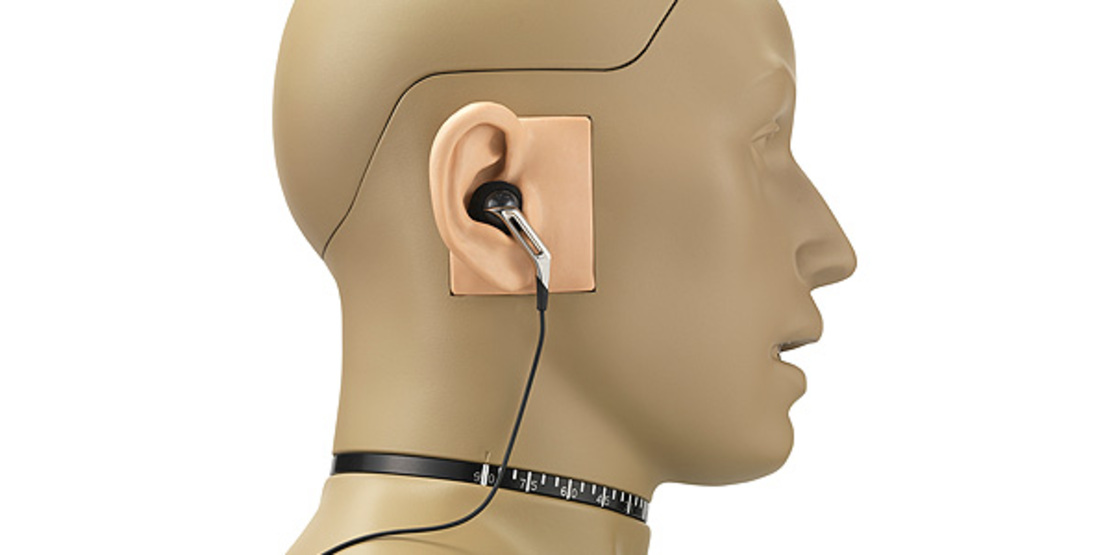1. Introduction
The KEMAR head and torso simulator was introduced by Knowles in 1972 and quickly became the industry standard for hearing-aid manufacturers and research audiologists (visit KEMAR.us to read the full story). It is based on worldwide average human male and female head and torso dimensions. It meets the requirements of ANSI S3.36/ASA58-2012 and IEC 60318-7:2011.
The GRAS 45BB KEMAR has the same dimensions and acoustical properties as the original KEMAR, but has been developed further by GRAS to meet the industry’s demand for realistic measurements of hearing aids, headphones, and headsets. It provides acoustic diffraction similar to that encountered around the median human head and torso, both in the proximity and in the far field.
As all the preconfigured 45BB KEMARs consist of the same basic 45BB KEMAR Non-configured, plus a set of application-specific accessories, the full information about a given KEMAR configuration is obtained by combining the information about the 45BB KEMAR Non-configured and the information for a given configured version as found in the present text. Read about the non-configured KEMAR here.

2. Design
The 45BB-10 is a KEMAR head and torso for ear and headphone test, with prepolarized ear simulators and anthropometric pinnae.
It is delivered fully configured, individually calibrated and ready for use. In addition to a system calibration certificate, a USB flash memory with simulation data is included.
The main configuration specific components of the 45BB-10 are the GRAS RA0045-S1 Ear Simulator According to 60318-4 and the KB5000/KB50001 Anthropometric Pinnae:
The 60318-4 Ear Simulator
The acoustic input impedance of the RA0045-S1 Ear Simulator closely resembles that of the human ear and, as a result, loads a sound source in very much the same way.
It complies with IEC 60318-4 and ITU-T P.57. and is measured and calibrated according to ITU-T P.57. It embodies a number of carefully designed volumes connected via well-defined and precisely tuned resistive grooves. In an equivalent electrical circuit, capacitors would represent the volumes, and inductance and resistance would represent respectively air mass and air flow within the resistive groves.
It is delivered with a built-in GRAS 40A0 1/2" prepolarized pressure microphone.
Read more about RA0045-S1 here
The Anthropometric Pinna
Compared to the standardized pinna, the anthropometric pinna embodies a number of improvements to the concha and ear canal, combined with increased collapsibility of the helix, and improved mounting. It is made of soft silicone, 35 Shore OO hardness.
The external shape of the pinna is identical to that of the standardized KEMAR pinna, but concha and ear canal have been modified so that they closely mimic the properties of a real human ear. The ear canal has been extended and is now an integral part of the pinna which seals directly against the ear simulator. Like the human ear, the ear canal has the 1st and 2nd bend, and the interface with the concha is oval. Fit and insertion consistency are much improved over the cylindrically or conically shaped ear canal extensions that are used with the standard pinna.
The flexibility of the outer ear has been improved, and when mounting supra-aural and circum-aural headphones the pinna now collapses against the head very much like a human ear.
In addition to the traditional push mounting from the outside, the pinna is secured with two screws from the inside of KEMAR head. These two screw ensure that the pinna is held firmly in place. Therefore, it seals perfectly against the ear simulator and the head, and it is, therefore, possible to mount and dismount DUTs repeatedly without compromising the seal.
Read more about the Anthropometric Pinnae here.
3. Applications
The anatomical shape of the pinna makes it possible to achieve a very good fit and sealing with anatomically shaped in-ear transducers.
Controlling the insertion depth is easy, leading to good insertion consistency and highly improved repeatability and accuracy of measurements.
The improved fit and seal also means that the low-frequency response is improved. It will allow you to reproduce base notes, as well as effectively measure (active & passive) attenuation.
Therefore, the 45BB-10 KEMAR is ideal for accurate and repeatable testing of headphones, earphones and in-ear hearing protectors.
4. Specifications
|
Connector type
|
BNC
|
|
Set sensitivity
|
12.5 mV/Pa (-38.5 dB re 1V/Pa)
|
|
Theoretical Dynamic range w/ GRAS preamplifier
|
25dB (A) to 146dB
151dB @ +28 V / ±14 V power supply
|
|
Resonance frequency
|
13.5kHz |
|
Temperature range, operation
|
-30 to 60 °C |
|
Temperature range, storage
|
-40 to 65 °C
|
|
Humidity range non condensing
|
0 to 95 % RH
|
|
ANSI standard
|
S3.36, S3.25 |
|
IEC standard
|
60318-4 (former 60711), 60318-7 (former 60959) |
|
ITU recommendation
|
P.380 |
|
Weight
|
11.45kg |
5. Download
45BB-10 Datasheet
45BB Brochure
6. Contact
Unit 2209, Golden Park Tower, 2 Pham Van Bach Street, Yen Hoa, Cau Giay District, Ha Noi, Vietnam
tel.: +84 (24) 38229808
fax: +84 (24) 38229553
cell: +84 90 336 8648
email: tuonglam@syscovn.com

